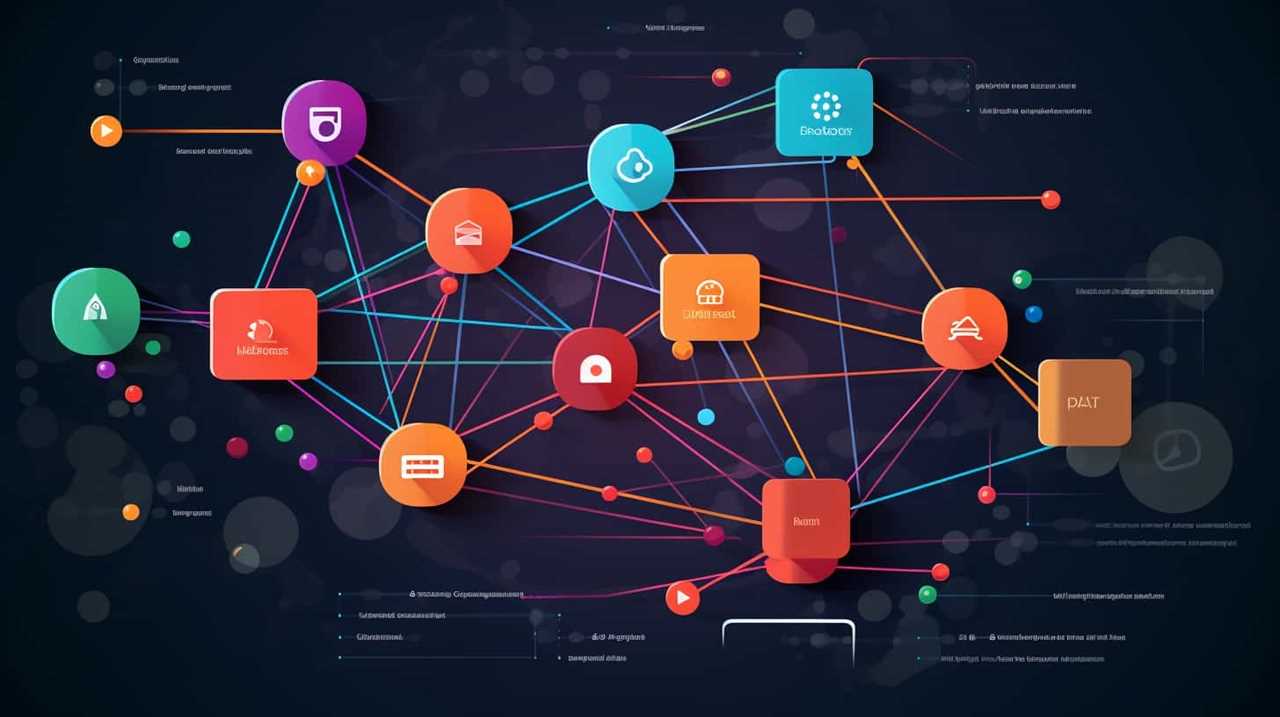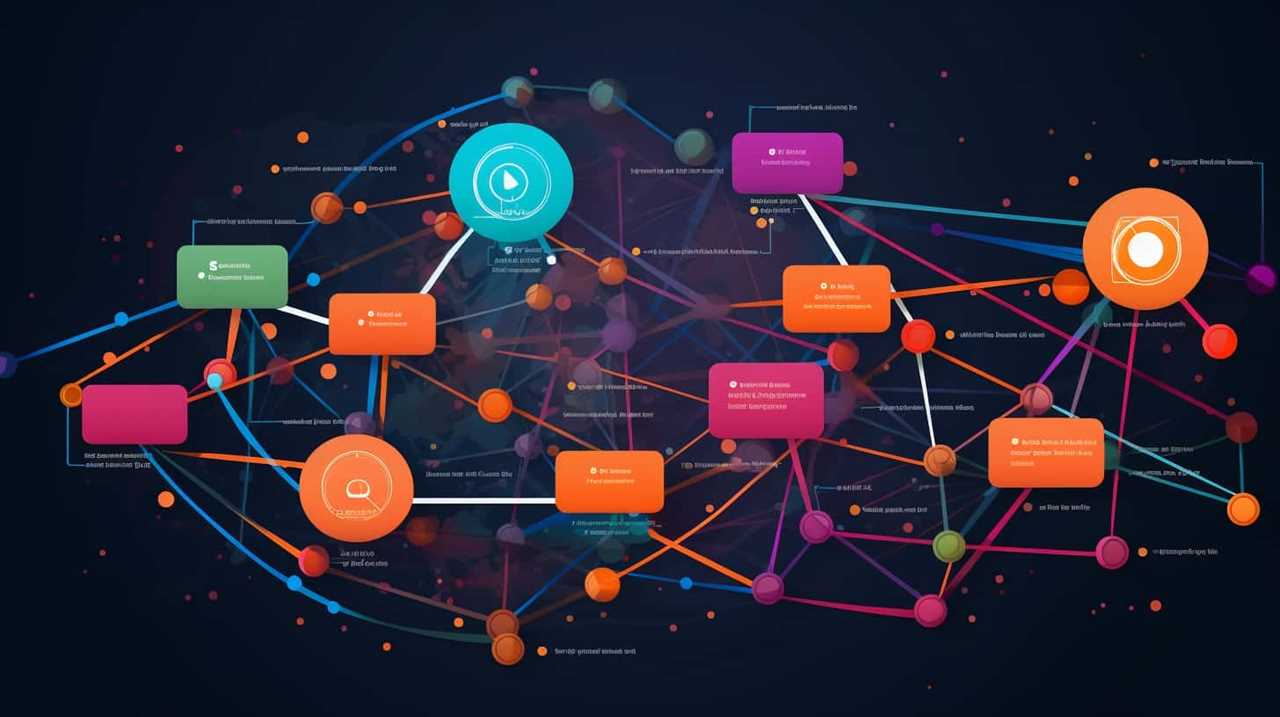Ah, the marvels of technical SEO! It acts as the invisible power enhancing website functionality, increasing visibility on search engines, and substantially expanding organic traffic.
With technical SEO, we ensure that your website is easily crawled and indexed, offering a seamless user experience. Say goodbye to slow loading times and hello to mobile-friendliness.
If you desire mastery in the digital realm, technical SEO is an absolute must. Let’s dive in and uncover why it’s so crucial for your online success.
Key Takeaways
- Technical SEO optimization is necessary for improving website performance, including loading times and navigation, leading to higher user satisfaction and engagement.
- Technical SEO plays a crucial role in enhancing search engine visibility, increasing organic rankings, and attracting more website traffic.
- Optimized page speed and mobile-friendliness are important factors in driving website traffic and achieving business success.
- Technical SEO strategies, such as website indexing, XML sitemaps, and structured data implementation, are essential for making websites more accessible, user-friendly, and visually appealing.
Enhances Website Performance
Enhancing website performance is a crucial aspect of technical SEO that directly impacts user experience and search engine rankings. By improving website loading time and optimizing website architecture, we can ensure that our website is fast, efficient, and user-friendly.

Improving website loading time is essential because users have little patience for slow-loading websites. Research shows that users abandon websites that take longer than a few seconds to load. By optimizing our website’s code, compressing images, and reducing the number of HTTP requests, we can significantly improve loading times.
Optimizing website architecture is another critical factor in enhancing performance. By organizing our website’s content, ensuring logical navigation, and properly structuring URLs, we enable search engines to crawl and index our site more effectively. This, in turn, improves our website’s visibility and accessibility to users.
Improves Search Engine Visibility
Improving search engine visibility through technical SEO is crucial for any website. By optimizing various technical aspects, such as website speed, mobile-friendliness, and structured data, we can increase our chances of achieving higher organic rankings.
This, in turn, leads to increased website traffic and more visibility in search engine results pages, ultimately driving more potential customers to our website.

Higher Organic Rankings
To achieve higher organic rankings and improve search engine visibility, we focus on optimizing technical SEO. By implementing technical SEO best practices, we can enhance our website’s performance and make it more attractive to search engines. This, in turn, can lead to improved click-through rates and increased conversion rates.
Technical SEO involves optimizing various technical aspects of a website, such as its structure, code, and speed. These optimizations help search engines understand and crawl our site more efficiently, ultimately improving its visibility in search results.
When our website ranks higher in organic search results, it’s more likely to attract organic traffic. This increased website traffic can then lead to even higher click-through rates and conversion rates.
Increased Website Traffic
Technical SEO plays a crucial role in boosting website traffic and enhancing search engine visibility. By implementing the right technical strategies, you can increase the number of visitors to your site, ultimately leading to higher conversion rates and improved business success.

Here are three ways technical SEO helps increase website traffic:
- Optimized page speed: A fast-loading website not only improves user experience but also helps search engines crawl and index your pages more efficiently.
- Mobile optimization: With the majority of internet users accessing websites through mobile devices, ensuring your site is mobile-friendly is essential for attracting traffic.
- Proper URL structuring: A well-organized URL structure makes it easier for search engines to understand the content of your pages, resulting in better search engine visibility.
Additionally, technical SEO can also help improve website traffic through conversion rate optimization and social media integration. By implementing these strategies, you can maximize the potential of your website and attract more targeted traffic to your business.
Boosts Organic Traffic
Our website’s technical SEO boosts our organic traffic by optimizing key elements for search engine visibility.
By implementing conversion rate optimization techniques, we ensure that our website is user-friendly and encourages visitors to take desired actions, such as making a purchase or signing up for a newsletter. This not only increases our organic traffic but also improves the overall effectiveness of our website.

Furthermore, our technical SEO strategy focuses on enhancing the quality of our content. By conducting keyword research, optimizing meta tags, and improving page load speed, we provide a seamless user experience, resulting in higher search engine rankings and increased organic traffic.
Ultimately, our dedication to technical SEO helps us attract valuable organic traffic and achieve our business goals.
Maximizes Website Crawlability
By maximizing website crawlability, we ensure that search engines can easily access and index our content, leading to better search engine rankings and increased organic traffic. Improving the crawlability of our website enhances the efficiency of search engine indexing, allowing our content to be discovered and ranked more effectively. Here are three key benefits of maximizing website crawlability:
- It ensures that search engines can find and understand all the pages on our website, increasing the visibility of our content.
- It helps to identify and fix any crawling errors or issues that may be preventing search engines from accessing certain parts of our website.
- It allows us to prioritize and optimize the indexing of our most important pages, ensuring they receive maximum visibility in search results.
By focusing on improving crawlability, we can boost our search engine rankings and drive more organic traffic to our website.

Now, let’s move on to how optimizing website indexing further enhances our SEO efforts.
Optimizes Website Indexing
After maximizing website crawlability, the next step in optimizing technical SEO is to focus on how website indexing can be further enhanced.
Website indexing is the process of search engines like Google analyzing and organizing the content on a website to make it searchable and accessible to users.
To improve website indexing, one important step is to create and submit XML sitemaps to search engines. XML sitemaps provide a roadmap of all the pages on a website, making it easier for search engines to discover and index them.

Additionally, ensuring that important pages are linked properly and have clear and descriptive meta tags can also improve website indexing.
Enhances User Experience
To further enhance user experience, it’s important to consider the impact of technical SEO. Technical SEO not only improves accessibility but also enhances navigation on a website. By implementing technical SEO strategies, websites become more user-friendly and easier to navigate, leading to a positive user experience.
Here are three key ways in which technical SEO enhances user experience:
- Faster page load times: Optimizing website speed not only improves user experience but also reduces bounce rates and increases conversions.
- Mobile responsiveness: Technical SEO ensures that websites are mobile-friendly, allowing users to access and navigate the site seamlessly on different devices.
- Structured data implementation: By using structured data markup, websites can provide rich snippets in search results, making it easier for users to find relevant information quickly.
Increases Website Speed
Optimizing website speed is crucial in technical SEO as it directly impacts user experience. Improving website loading time not only enhances user satisfaction but also reduces bounce rate, keeping visitors engaged and more likely to explore your site further.

A slow-loading website can lead to frustration and abandonment, causing users to leave before even experiencing your content. By optimizing website speed, you can ensure that your site loads quickly and efficiently, providing a seamless browsing experience for your visitors. This can result in higher user engagement, increased page views, and ultimately, improved conversions.
Next, let’s delve into another important aspect of technical SEO: ensuring mobile-friendliness.
Ensures Mobile-Friendliness
Improving website speed not only enhances user satisfaction but also reduces bounce rate, keeping visitors engaged and more likely to explore your site further.
With mobile-friendliness, we can ensure that our website is accessible and enjoyable for users on all devices.

Mobile design and a responsive layout are crucial components of creating a mobile-friendly website. Here are three reasons why mobile-friendliness is essential:
- Improved user experience: A responsive layout ensures that your website adapts to different screen sizes, providing a seamless and user-friendly experience for mobile users.
- Increased visibility in search results: Search engines prioritize mobile-friendly websites, so having a mobile-friendly site can improve your visibility and ranking in search engine results pages.
- Higher conversion rates: Mobile users are more likely to convert into customers if they can easily navigate and interact with your website on their devices.
Frequently Asked Questions
How Does Technical SEO Contribute to Improving Search Engine Visibility?
Technical SEO contributes to improving search engine visibility by optimizing the technical aspects of a website, such as website speed and performance. It complements on-page SEO efforts and ensures that search engines can crawl, index, and understand a website effectively.
What Are Some Common Technical SEO Techniques Used to Boost Organic Traffic?
Technical SEO techniques, such as optimizing site speed, improving mobile responsiveness, and using structured data, can significantly boost organic traffic. These strategies are essential for increasing visibility and driving more targeted traffic to our website.
How Does Technical SEO Maximize Website Crawlability?
Optimizing crawlability is crucial for enhancing website structure. By implementing technical SEO techniques, we can ensure search engine bots can easily navigate and index our site, leading to improved organic traffic and visibility.

Can Technical SEO Improve Website Indexing for All Types of Websites?
Yes, technical SEO can improve website indexing for all types of websites. By implementing technical SEO strategies, we can enhance crawlability, optimize site structure, and ensure search engines can easily index and understand our content. These technical SEO benefits are crucial for website success.
What Are the Key Elements of Technical SEO That Enhance User Experience?
Optimizing speed and incorporating structured data are key elements of technical SEO that enhance user experience. These techniques, like a well-oiled machine, ensure smooth navigation and provide valuable information to users.
Conclusion
In conclusion, technical SEO is an absolute necessity for any website looking to thrive in the digital world.
It enhances performance, improves visibility, boosts organic traffic, maximizes crawlability and indexing, enhances user experience, increases speed, and ensures mobile-friendliness.

Technical SEO is like the secret sauce that takes a website from good to extraordinary, propelling it to the top of search engine rankings and attracting droves of eager visitors.
Don’t miss out on the incredible benefits that technical SEO can bring to your website’s success.










